Auction Highlights | Interiors | 13 & 14 February 2024
This February we have our two-day Interiors auction, offering a wide selection of items for the home, including furniture, ceramics, works of art, pictures and rugs. On Day One, we are delighted to offer a family collection lovingly collected over twenty one years from a Cumbrian estate. Here Ashley Matthews, takes a look at the auction and picks out some of the highlights.
A Private Collection from a Cumbrian Estate
The lake-side property was built just after the turn of the last century and the owners chose to complement the oak panelling of the main reception room with carefully selected oak and vernacular furniture, carved figures and Delft, Imari and Cantonese porcelain.
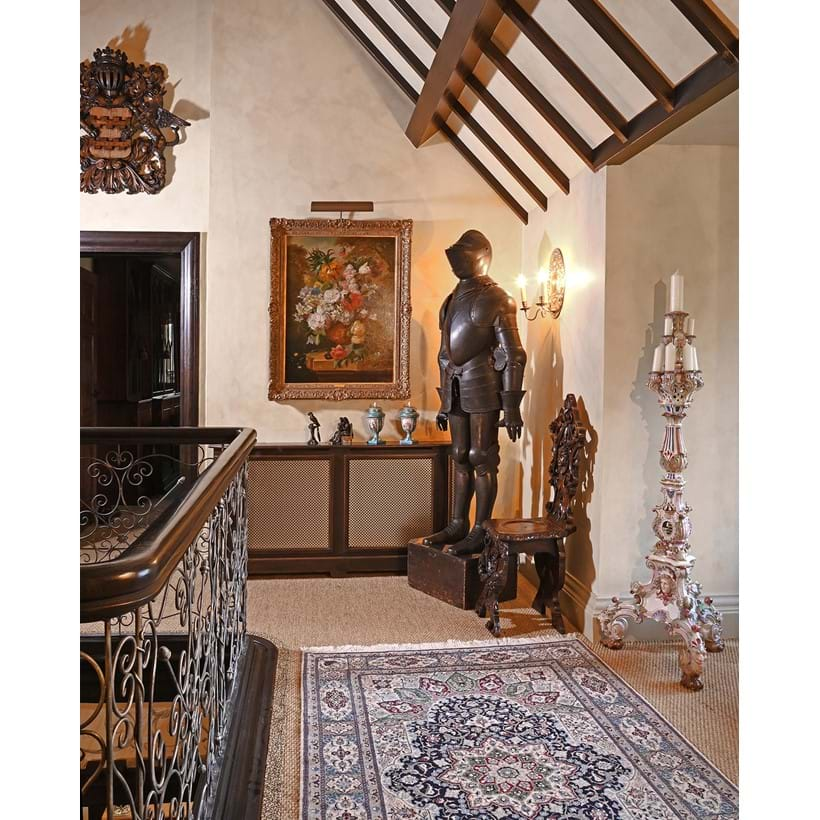
Throughout the rest of the house, a lighter more colourful approach of richly inlaid Dutch furniture, and painted Swiss Tyrol pieces was selected to harmonise with the richly coloured wallpapers and fine carpets from Qum and Tabriz.
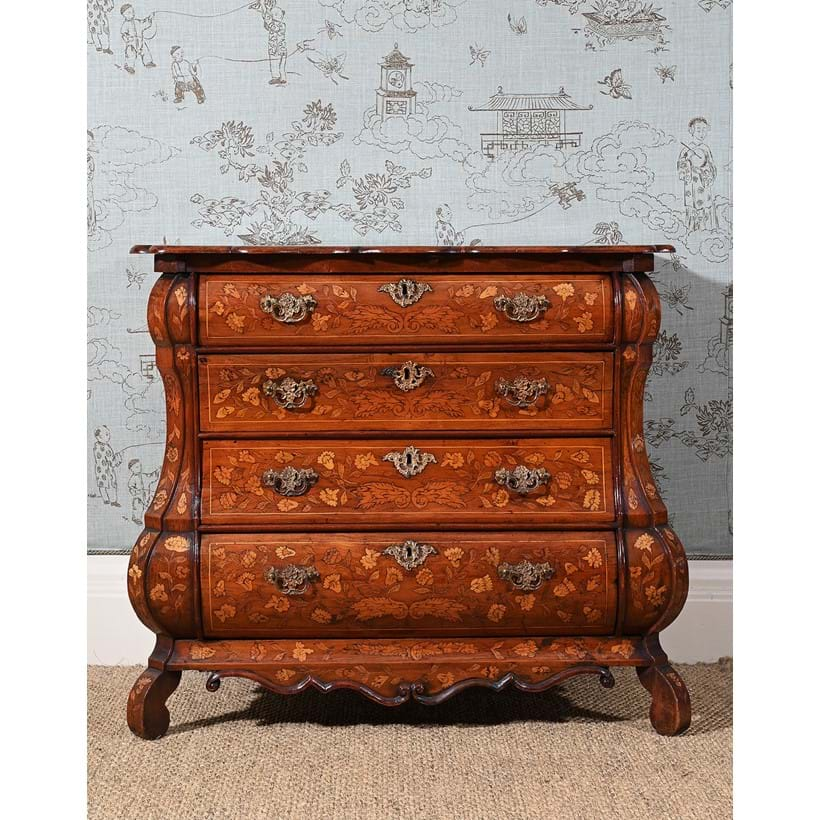
A personal highlight is Lot 84; a large turned fruitwood bowl, possibly for punch or wassail. It is decorated with a carved triangulated band, and stands on a spread foot it is 23cm high and 39cm diameter.
Wassailing is a tradition where, especially in the Cider regions of the UK, the purpose of wassailing is to awaken the cider apple trees and scare away evil spirits ensuring a good harvest of fruit in the coming autumn. Large wassail bowls would be filled and passed around, like a loving cup. The party would sing and drink to the good harvest until both ‘merry and gay’. An example of lyrics from Somerset in the 19th century go thus:
Apple tree, apple tree, we all come to wassail thee,
Bear this year and next year to bloom and to blow,
Hat fulls, cap fulls, three cornered sack fills,
Hip, Hip, Hip, hurrah,
Holler biys, holler hurrah.
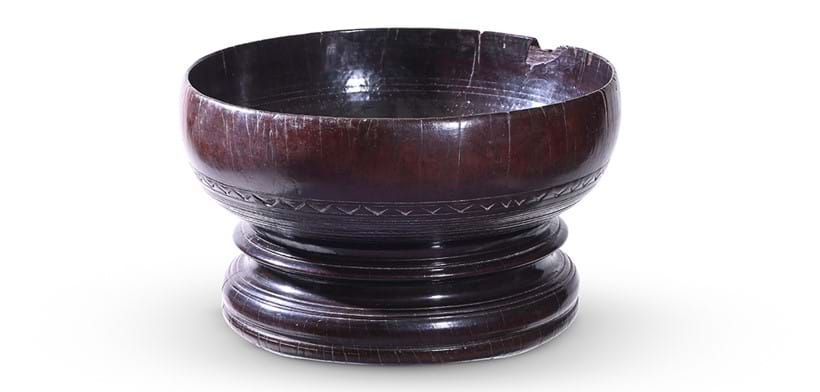
Day Two of the sale follows on and comprises further items sourced from a wide range of vendors and spanning a timescale from the late 17th century through to contemporary Modern Design pieces.
Luggage Stands in Victorian Style
Traditional ‘country house’ type furniture and furnishings remain popular, and Lot 319, a pair of luggage stands in Victorian taste, is a good example of this. These appear to have been fairly recently manufactured from the second half 19th century, with later elements, and present well. Each has a slatted top above turned legs and could work equally well used as a pair in a large spare room for ‘his-and-her’ cases or in separate rooms for separate guests. Each are of good proportion at 37cm high, 76cm wide and 55cm deep.
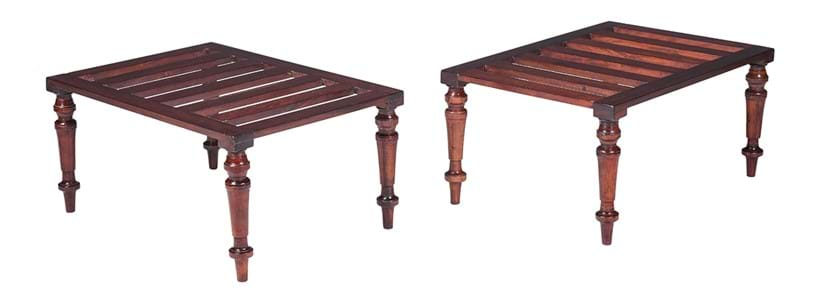
A Selection of Chest of Drawers
Keeping on the bedroom theme, the sale includes a selection of chests of drawers, from a Victorian simulated bamboo example (Lot 316), George III mahogany examples (including Lot 449), as well as a French Louis Philippe example (Lot 340). This particular commode or chest of drawers has the nice feature of a fossilised marble top above its arrangement of five long drawers. The Louis Philippe period overlaps with the late William IV and early Victorian periods in England but tends to be more restrained compared to its English counterparts and therefore translates well into a modern and more minimalist interior.
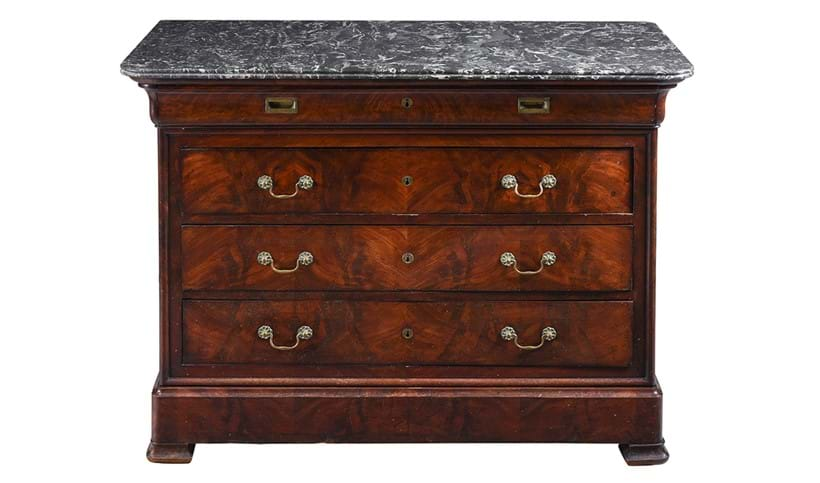
A Parian Bust of Apollo
Ideal for furnishing a library or entrance hall, we have Lot 510, a Parian bust of Apollo designed by C. Delpech and produced by the Art Union of London. Modelled after the famed Apollo Belvedere, a 2nd Century Roman marble, once believed to be the epitome of perfection of the Greek aesthetic idea, it became an icon of the Enlightenment. It was removed by Napoleon from the Vatican and placed in the Louvre until his downfall in 1815 whence it was reinstalled in the Vatican. The noted art historian Kenneth Clarke later described it as becoming “the most admired piece of sculpture in the world” and that “was Napoleon's greatest boast to have looted it from the Vatican”.
Parian is a type of biscuit porcelain produced to simulate marble. The Art Union of London commissioned Copeland to produce works of art that would raise public taste, reproducing the work of contemporary sculptors. A good example of this is the present lot.

An Extending Dining Table, After Robert Jupe
The sale also includes Lot 550, a flame mahogany extending dining table, after the pattern by Robert Jupe. The patent was first granted in March 1835 and the originals were produced by the firm of John Johnstone of New Bond Street.
This table was purchased by the vendor from Brights of Nettlebed. It features the ingenious capstan action which allows it to open concentrically for the insertion of the eight additional leaves. The table stands 75cm high and is 169cm diameter when closed and expands to 228cm diameter when fully extended.
It also comes together with a mitre shaped cabinet to hold the leaves when not in use and stand handsomely at the side of the dining room.
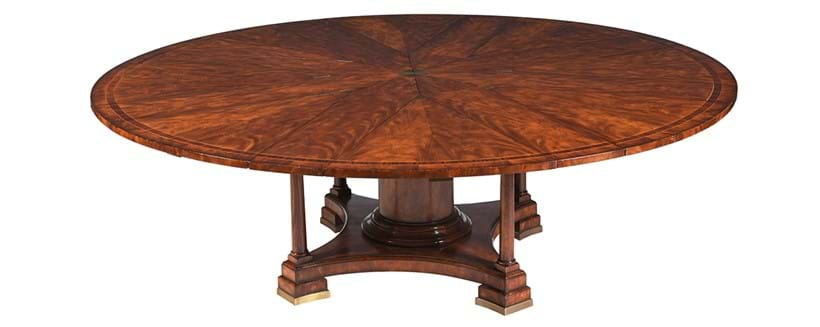
A Coronation Mug by Eric Ravilious for Wedgwood, to Commemorate the Coronation of King Edward VIII
Finally, we have Lot 579, a coronation mug designed by the celebrated artist Eric Ravilious (1903-1942) for Wedgwood, for the anticipated coronation of King Edward VIII. The coronation of course never happened as in December 1936 the King abdicated the throne to marry Wallis Simpson and his brother King George IV assumed the throne instead, giving Edward the title of Duke of Windsor.
The designs for the mug were re-used for the coronations of King George VI (1937) and posthumously for Elizabeth II (1952). As something of a rare survivor this Edward VIII mug is estimated at £700-1,000 (+ fees).
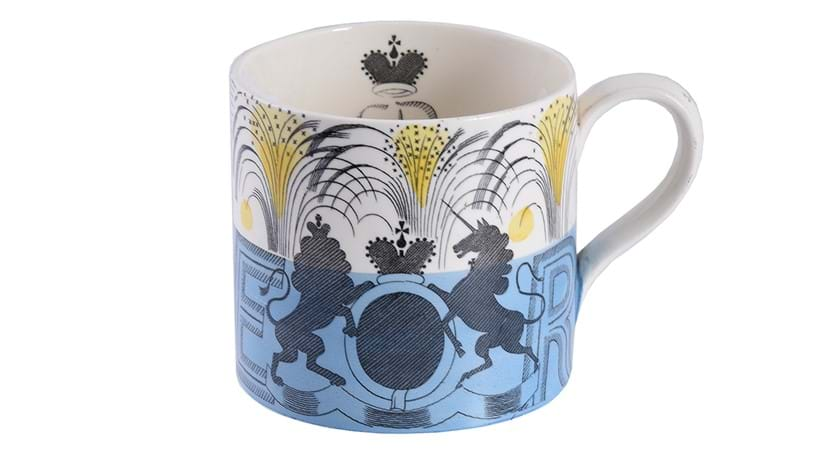
Auction Details
Tuesday 13 & Wednesday 14 February, 10.30am GMT
Donnington Priory, Newbury, Berkshire RG14 2JE
Browse Day One
Browse Day Two
Sign up to email alerts
VIEWING:
Viewing in Newbury:
- Sunday 11 February: 10am-3pm
- Monday 12 February: 10am-4pm
- Tuesday 13 February: 8.30am-4pm
- Wednesday 14 February: 8.30am-4pm















